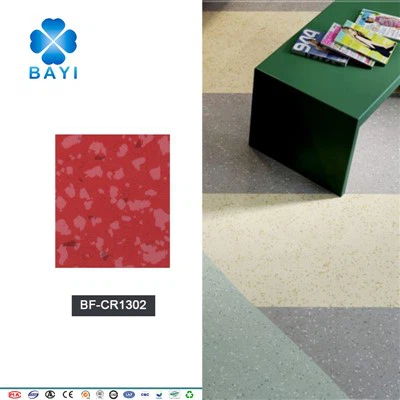Negotiable
The date of payment from buyers deliver within days
Jiangsu
Long-term effective
2024-02-26 01:42
273
 Company Profile
Company Profile

By certification [File Integrity]
Contact: ningshun(Mr.)
Email: 
Telephone: 
Phone: 
Area: Jiangsu
Address: Jiangsu
Website: http://www.ningshungroup.net/ http://ningshun.qzlggm.com/
 Heterogeneous Vinyl Sheet Roll Flooring Crystal Series
Heterogeneous Vinyl Sheet Roll Flooring Crystal Series
unit price:Negotiable
 A572GR55 Heavy Plate
A572GR55 Heavy Plate
unit price:Negotiable
 Black Slate Stone
Black Slate Stone
unit price:Negotiable
 Sturdy Work Boots
Sturdy Work Boots
unit price:Negotiable
 Super Fine UHMWPE Fiber
Super Fine UHMWPE Fiber
unit price:Negotiable
 JL22 commercial coffee machine
JL22 commercial coffee machine
unit price:Negotiable
Â
Belt conveyor rubber refers to the rubber material used in the construction of conveyor belts. Conveyor belts are essential components in various industries for the efficient movement of bulk materials, packages, or products from one point to another. Rubber is a common material for conveyor belts due to its unique combination of properties, including flexibility, durability, and resistance to wear. Here are key aspects related to belt conveyor rubber:
Â
Cover Compounds:
The outer layer of a conveyor belt, known as the cover, is typically made of rubber. The cover is crucial for protecting the inner layers and providing resistance to wear, impact, and other environmental factors. Different cover compounds are used based on the specific requirements of the application, such as abrasion resistance, oil resistance, heat resistance, etc.
Â
Reinforcement:
The rubber material in a conveyor belt is often reinforced with layers of fabric or steel cords. This reinforcement provides strength and stability to the belt, allowing it to handle the load and stress of material transportation.
Â
Rubber Types:
Various types of rubber may be used in conveyor belts, including natural rubber and synthetic rubber compounds such as styrene-butadiene rubber (SBR), nitrile rubber (NBR), butadiene rubber (BR), or ethylene propylene diene monomer (EPDM). The choice of rubber type depends on factors like the application's requirements, environmental conditions, and the type of materials being conveyed.
Â
Durometer/Hardness:
The hardness of the rubber is measured on the durometer scale. Different applications may require conveyor belts with varying levels of hardness to optimize flexibility and resistance to wear. Softer rubber provides greater flexibility, while harder rubber offers better wear resistance.
Â
Covers for Special Applications:
In addition to general-purpose conveyor belts, there are specialized belts with rubber covers designed for specific applications. For example, oil-resistant covers for handling materials with oil content, heat-resistant covers for high-temperature applications, and flame-resistant covers for applications with potential fire hazards.
Â
Coefficient of Friction:
The coefficient of friction of the rubber on the conveyor belt impacts the belt's ability to grip and convey materials. The selection of rubber compounds can influence the frictional characteristics of the belt.
Â
Compliance with Standards:
Conveyor belt rubber must often comply with industry standards and regulations, ensuring that the material meets safety and performance requirements. Common standards include those set by organizations like the International Organization for Standardization (ISO) and the Conveyor Equipment Manufacturers Association (CEMA).
Â
Maintenance and Repair:
The durability and quality of the rubber used in conveyor belts affect maintenance requirements and repair frequency. Regular inspections and appropriate maintenance practices can extend the life of the conveyor belt.
Â
Environmental Considerations:
Environmental factors, such as exposure to weather conditions, UV radiation, and chemicals, can impact the performance of conveyor belt rubber. Specialized cover compounds may be used to enhance resistance to these environmental elements.
When selecting or specifying conveyor belt rubber, it's essential to consider the specific requirements of the application, including the type of materials being conveyed, environmental conditions, and any regulatory standards that may apply. Conveyor belt manufacturers and suppliers can provide guidance on choosing the most suitable conveyor belt rubber for a particular application.
Â
Â
Execution Standard: MT/T668-2019
Â
Â
Application: A conveyor belt main application is the handling of bulk materials for heavy industries. It is the most technological and suitable method of material conveying as it prevents relying on wheeled vehicles to transport bulk items.
Original: Jiangsu, China
Certification: MT/T668-2019
Price: Negotiable
Material: a blend of neoprene, nitrile, and styrene butadiene rubber (SBR) and comes inserted with a cloth fabric.
Payment term: TT, LC
Delivery date: short delivery
Packing: export standard
Warranty: 1 years
MOQ: 100m
Â




Â
Â
The conveyor belt is made of rubber material, which is wear-resistant, oil-resistant, high-temperature resistant, acid and alkali resistant, and cold resistant.
Â
Â
Â
http://www.ningshungroup.net/
